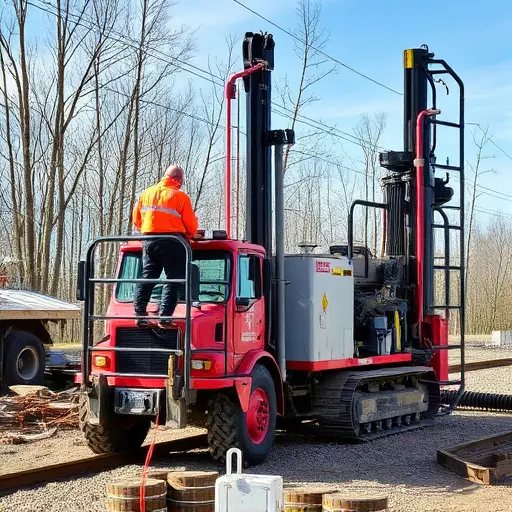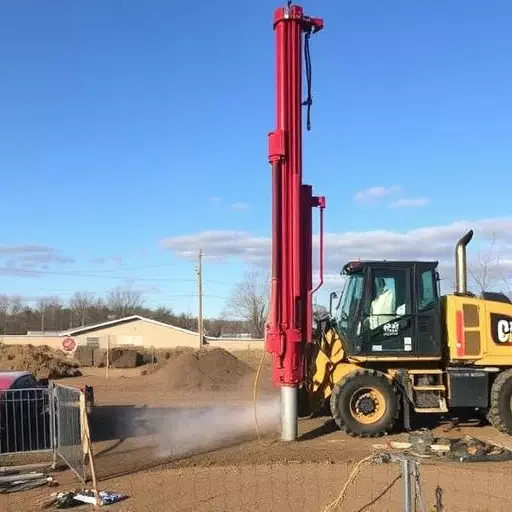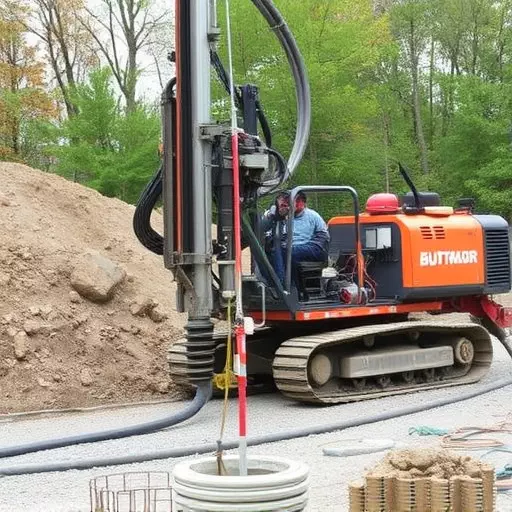Directional boring technology, led by Horizontal Directional Drilling (HDD) or Trenchless Technology, has revolutionized construction and utility sectors. This innovative method enables precise underground installation of pipes, cables, and fibers without extensive trenching, offering significant advantages in urban areas. HDD's benefits include reduced environmental impact, faster project times, and minimal surface disruptions, making it safer and more cost-effective for various industries, from infrastructure development to utility installations, particularly in the Directional Boring Toledo region.
Directional boring technology has transformed the construction industry, offering efficient and innovative trenchless solutions. In this article, we explore the advancements in Horizontal Directional Drilling (HDD) and its impact on modern infrastructure development. From understanding the core principles to delving into key components and safety measures, we uncover how HDD provides precise, cost-effective, and environmentally friendly underground construction methods. Discover the vast applications of directional boring equipment, revolutionizing everything from utility installation to underground pipeline laying.
- Understanding Directional Boring Technology
- The Evolution of Horizontal Directional Drilling
- Advantages and Applications: Trenchless Solutions
- Key Components of Directional Boring Machines
- Safety Measures in Directional Boring Operations
Understanding Directional Boring Technology

Directional boring technology has revolutionized trenchless construction, allowing for precise and efficient excavation without traditional trenching methods. This innovative process utilizes specialized equipment, such as Horizontal Directional Drilling (HDD) machines, to create underground passages by bending and directing drill strings through the soil. The technology is particularly advantageous in urban settings where space is limited and disrupting the ground surface is undesirable.
The directional boring process involves several steps, including planning, site preparation, and controlled drilling. With its ability to navigate around obstacles like buildings, pipelines, and utilities, HDD offers a safer and more cost-effective alternative for underground construction projects. This advanced technique has gained significant popularity in various industries, from utility installations to infrastructure development, due to its versatility and minimal environmental impact.
The Evolution of Horizontal Directional Drilling

The evolution of horizontal directional drilling (HDD) has been a game-changer in the construction and utility industries, revolutionizing the way we navigate beneath our feet. This cutting-edge technique, often referred to as Trenchless Technology, has made significant strides since its early beginnings. Initially, traditional excavation methods dominated, involving deep trenches and large equipment, which were time-consuming and disruptive. However, the advent of Directional Boring Toledo brought about a quieter, more precise approach.
HDD allows for the installation of pipes, cables, or other utilities underground without the need for extensive excavation. This trenchless technology has become a preferred method due to its efficiency, reduced environmental impact, and minimal disruption to nearby structures and infrastructure. With advancements in machinery and techniques, horizontal directional drilling has expanded its applications, making it a versatile tool for various projects, from water main replacements to broadband internet installations.
Advantages and Applications: Trenchless Solutions

Directional boring technology, such as Horizontal Directional Drilling (HDD), offers numerous advantages over traditional excavation methods, especially in urban or sensitive environments. This innovative approach, often referred to as Trenchless Technology, allows for the installation of utilities like pipes, cables, and fibers without the need for deep trenches. By using advanced machinery, operators can direct drills beneath existing structures, roads, and infrastructure with precision, minimizing disruptions to the surface.
The applications of Directional Boring Toledo are vast. It is particularly useful in areas where traditional excavation would cause significant disturbances. For example, it can be employed to install new water mains or sewer lines under city streets without disrupting traffic or damaging sidewalks. This method is also ideal for cross-country utility installations, enabling the laying of pipes beneath rivers or other natural features that traditional methods might struggle with. Trenchless technology ensures faster project completion times, reduces environmental impact, and minimizes costs associated with traditional excavation techniques.
Key Components of Directional Boring Machines

Directional boring machines are innovative pieces of equipment that have revolutionized trenchless technology. These machines play a pivotal role in various construction and utility installation projects, enabling precise excavation without traditional trenching methods. At the heart of directional boring lies several key components that work in harmony to achieve accurate and efficient drilling.
One of the primary components is the drill head, which is responsible for cutting through soil and rock. Advanced drill heads feature versatile tools, such as downhole hammers or rotary bits, designed to tackle different terrains. Additionally, these machines utilize sophisticated guidance systems, often employing GPS technology, to ensure accurate directional control. The ability to steer the borehole in real-time is a game-changer, eliminating the need for extensive excavation and reducing environmental impact. Furthermore, horizontal directional drilling (HDD) techniques, facilitated by these machines, allow for the installation of pipes, cables, or utilities beneath existing structures, making it an ideal solution for urban renewal projects.
Safety Measures in Directional Boring Operations

In directional boring operations, safety is paramount due to the intricate nature of underground construction. Horizontal directional drilling (HDD) utilizes advanced trenchless technology to create horizontal bores beneath the earth’s surface, minimizing surface disruption. To ensure worker safety during these operations, robust safety protocols must be implemented. This includes comprehensive training for operators on equipment use and potential hazards, regular inspections of machinery and bore paths to identify any issues, and adherence to strict personal protective equipment (PPE) guidelines.
Furthermore, clear communication and coordination among team members is essential. Well-defined emergency response plans specific to HDD projects must be readily accessible and practiced regularly. By prioritizing safety through these measures, directional boring techniques can effectively navigate underground landscapes while safeguarding personnel and minimizing environmental impact, making it a preferred method for many infrastructure projects today.


